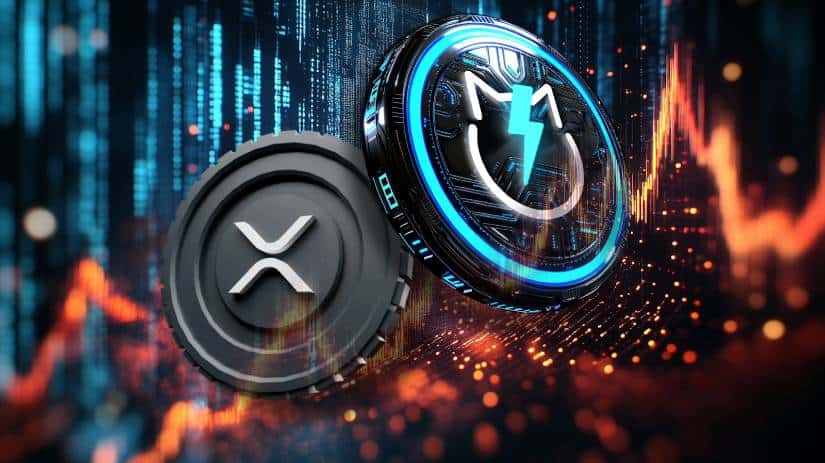XRP Ecosystem Expands as Ripple’s RLUSD Stablecoin Achieves Collateral Status at Hidden Road
In a significant development for the XRP ecosystem, Ripple CEO Brad Garlinghouse announced at a Singapore conference that the company's stablecoin, RLUSD, has been approved as collateral across all services at Hidden Road, a global prime brokerage. This milestone underscores Ripple's ongoing efforts to bridge the gap between cryptocurrency and traditional finance, particularly in high-friction payment routes. The integration enables institutional players to participate in real-time cross-asset trading, further solidifying XRP's position in the financial sector. As of July 2025, this collaboration marks a pivotal step in expanding the utility and adoption of Ripple's digital assets.
Ripple's RLUSD Stablecoin Gains Collateral Status at Hidden Road
Ripple CEO Brad Garlinghouse revealed at a Singapore conference that the company's stablecoin, RLUSD, will now be accepted as collateral across all services at Hidden Road, a global prime brokerage. This development marks a significant step in bridging cryptocurrency with traditional finance.
The integration focuses on high-friction payment routes, enabling institutional players to engage in real-time cross-asset trading with improved capital efficiency. "RLUSD is the first stablecoin designed for large-scale cross-margin trading between digital and traditional markets, available 24/7," Garlinghouse stated.
The MOVE aligns with Ripple's broader strategy to expand institutional adoption. Hidden Road's strong client base and trading volumes provide an ideal platform for RLUSD's collateral utility. The partnership enhances liquidity infrastructure while creating new financial instruments backed by Ripple's balance sheet.
XRP Rich List 2025: The Rarity of Top Holders
New data from XRPScan reveals the exclusivity of XRP ownership, with fewer than 1 million genuine holders globally—just 0.01% of the world's population. The token's initial distribution and high entry barriers for top-tier holdings contribute to its scarcity.
The XRP bridge list categorizes wallets by holdings, showing the thresholds for entering the top 10%, 5%, or 0.01%. Despite 6.6 million wallets on record, duplicate addresses and dust accounts skew the true count. Early sellers further dilute long-term holder concentration.
Analyst Edoardo Farina's July 2025 snapshot underscores how XRP's ownership structure contrasts with mainstream perception. The asset remains one of crypto's most stratified by wealth distribution, with tiered holdings acting as a proxy for network influence.
XRP Price Prediction 2025—Resistance at $2.5 Looms as Consolidation Continues
XRP's price action remains muted in early 2025, trapped between key moving averages as trading volume fails to match November 2024 levels. The token currently finds support at $2.22 (50-day MA) while facing resistance at $2.36 (200-day MA), with technical indicators suggesting prolonged consolidation ahead.
Market sentiment faces a litmus test as Ripple's CTO fuels speculation with claims about Satoshi Nakamoto's alleged XRP holdings. While some analysts project ambitious $10+ targets, the immediate challenge lies in overcoming the $2.5 resistance barrier—failure to breach which could see retracement to $2 support levels.
The cryptocurrency's inability to sustain momentum above $2.3, coupled with declining volume, paints a cautious short-term picture. Traders await either a decisive breakout or confirmation of extended range-bound trading as the RSI hints at building bullish pressure beneath the surface.
Was the Ripple Lawsuit Designed to Keep XRP’s Price Down? 9,000-Hour XRP Researcher Speaks
A crypto expert from Apex Crypto Consulting, Jesse, has analyzed the Ripple vs. SEC lawsuit after dedicating over 9,000 hours to researching Ripple and the global financial system. His findings suggest the legal battle may be a strategic maneuver rather than a genuine regulatory clash.
Jesse posits that Ripple operates beyond the scope of a typical cryptocurrency firm, with DEEP ties to central banks and the IMF. The long-term vision, he argues, is positioning XRP as a global reserve currency—potentially displacing legacy systems like SWIFT.
The lawsuit itself appears to serve multiple functions. By artificially suppressing XRP's price, Ripple could secure partnerships under the radar while building a global payments infrastructure. Evidence points to hundreds of signed NDAs with financial institutions, reinforcing this stealth expansion theory.
Historically, attempts to disrupt monetary systems have met fierce resistance. Yet Ripple advances unchecked—a fact Jesse interprets as implicit endorsement from powerful financial entities.
XRP Breaks Key Resistance as Ripple's Banking Charter Application Fuels Rally
XRP surged 2.36% to $2.26, decisively breaking through the $2.28 resistance level with trading volume spiking above 67 million. The move follows Ripple Labs' July 2nd application for a national bank charter with the U.S. Office of the Comptroller of the Currency.
Technical charts show completion of a multi-year symmetrical triangle pattern, with analysts projecting parabolic targets between $21.50 and $80. The most aggressive price action occurred during a 10:00 volume spike, while support solidified at $2.24-$2.25.
Approval of Ripple's banking charter would mark a watershed moment for crypto integration with traditional finance, granting federal trust bank status. Market participants now watch the $2.29-$2.30 zone as the next resistance test.
Mercado Bitcoin to Tokenize $200M in Real-World Assets on XRP Ledger
Latin America's Mercado Bitcoin is set to tokenize over $200 million in real-world financial assets, including fixed income and equity instruments, on the XRP Ledger (XRPL). This initiative marks one of the largest tokenization efforts by a regional institution on the XRPL.
The move aligns with projections that tokenized real-world assets could grow from $0.6 trillion in 2025 to nearly $19 trillion by 2033, according to a Ripple and Boston Consulting Group report. Mercado bitcoin has already tokenized over $185 million in private credit assets and connects to a network used by more than 70 central banks and financial institutions globally.
Ripple, a key contributor to the XRPL, is supporting the integration. The two firms have previously collaborated on cross-border treasury flows between Brazil and Portugal using Ripple Payments, as well as the listing of RLUSD, an enterprise-grade stablecoin.

